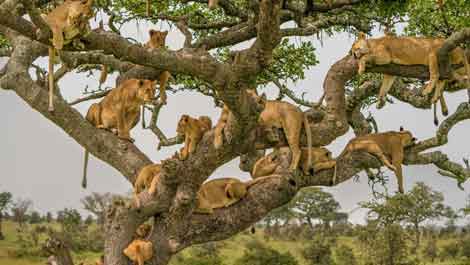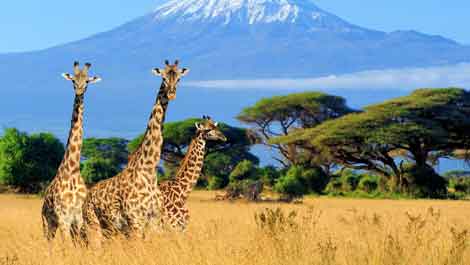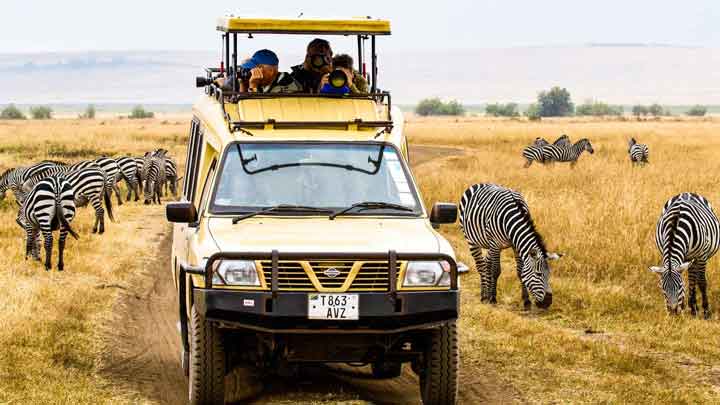The cost of a safari is not cheap. It includes park fees, vehicle rental and fuel, accommodation and guides. Travel agent overheads and profit are also added to the total cost.
George loves to show guests around Tanzania and has a wealth of knowledge about wild animals. He is particularly fond of the Serengeti and has climbed Kilimanjaro many times.
Serengeti National Park

The Serengeti is perhaps the most famous wildlife reserve in Tanzania. It is known worldwide for its annual migration of wildebeest and zebra herds. It also has a great population of predators, including lions and cheetahs. It is also home to the Maasai tribe, one of the most well-known local tribes in East Africa.
The park’s name comes from the Maasai word “Serengeti,” which means “endless plains.” The park features vast grassland and savanna, as well as riverine forest and woodland. It is dotted with rocky outcroppings called kopjes, the most notable being the Simba Kopje, or Lion Kopje. It is also home to many different bird species. This includes the Kori bustard, which is easy to spot by its spray of stiff gold head feathers.
Ngorongoro Crater
A UNESCO World Heritage Site, Ngorongoro Crater is a wildlife haven known for having one of the highest densities of animals in Africa. The caldera is home to elephants, black rhinoceroses, zebras, buffalos, hyenas, warthogs and herds of Grant’s and Thomson’s gazelles. It also has the continent’s highest concentration of lions. The only creatures that don’t live here are giraffes and impala; this is because the steep walls make it hard for them to descend into the crater.
Many of the animals stay in the Ngorongoro Crater year round, while others move through it during the Great Migration. The best time for safaris in Ngorongoro is during the dry season from June to October, when animals congregate and are easy to spot. It’s also during this time that the Ngorongoro Crater transforms into a lush emerald garden.
Tarangire National Park
Located in the Northern Region of Tanzania, Tarangire National Park is known for its large herds of elephants. It is also home to unique baobab trees – with their unusual shape of massive trunks and stunted root-like branches, they are instantly recognizable as an African icon.
The park is characterized by a wide variety of wildlife species in the grasslands, woodlands and savannahs. Walk safaris are a special experience here, as you can explore the park on foot, getting closer to nature.
Bird lovers are spoilt for choice as Tarangire hosts around 550 different bird species. Crested francolins, hoopoes, yellow necked spurfow, hornbills, guinea fowl, bateleur eagles, white-bellied go away birds and mousebirds are a few of the many species you can see here.
Lake Manyara National Park
Located west of Arusha, Lake Manyara is the park most people visit as a first stop on their Tanzania safari. Its unique features include the soda lake, forests, and a rich diversity of primates. Visitors can also enjoy birding.
The highlight of any Lake Manyara safari is the population of the park’s unusual tree climbing lions. While the reason for their behavior is unknown, it is clear that they find relief from biting insects and a vantage point to spot prey, Check out this site.
Another exciting activity in the park is guided nature walks where tourists can explore different trails on foot accompanied by an armed park guide. In addition, Lake Manyara offers night game viewing an experience where tourists can spot nocturnal animals and predators. This requires a separate fee from the park entrance.
Kilimanjaro National Park

The wildlife in Kilimanjaro National Park is a bit less diverse than in the other safari parks in Tanzania, but it’s still worth seeing. Herds of hoofed animals like wildebeests, zebras, giraffes and buffalo are common in the park’s plains while elephants can be spotted at the Shira plateau. Predators include lions, cheetahs and hyenas.
Conclusion:
The park’s mountain slopes and base are also home to some species of birds. Birding in the park is best done from November to April. The park is divided into different vegetation zones including the alpine zone, where snow-capped peaks are a stunning sight. The park is also a part of the Kenyan Mountains Endemic Bird Area, which supports several species that are endangered or restricted to ranges in only a few other places in Africa.


